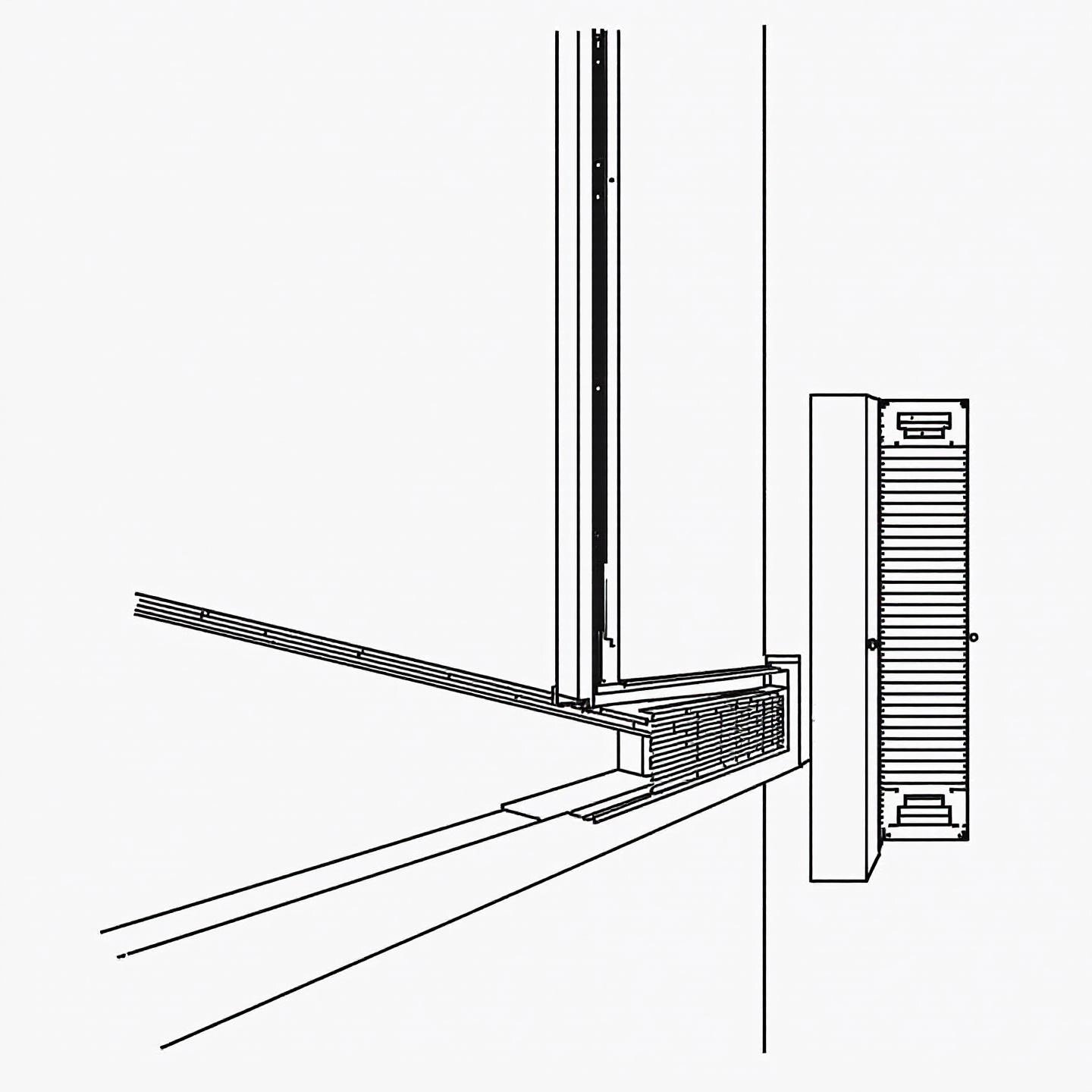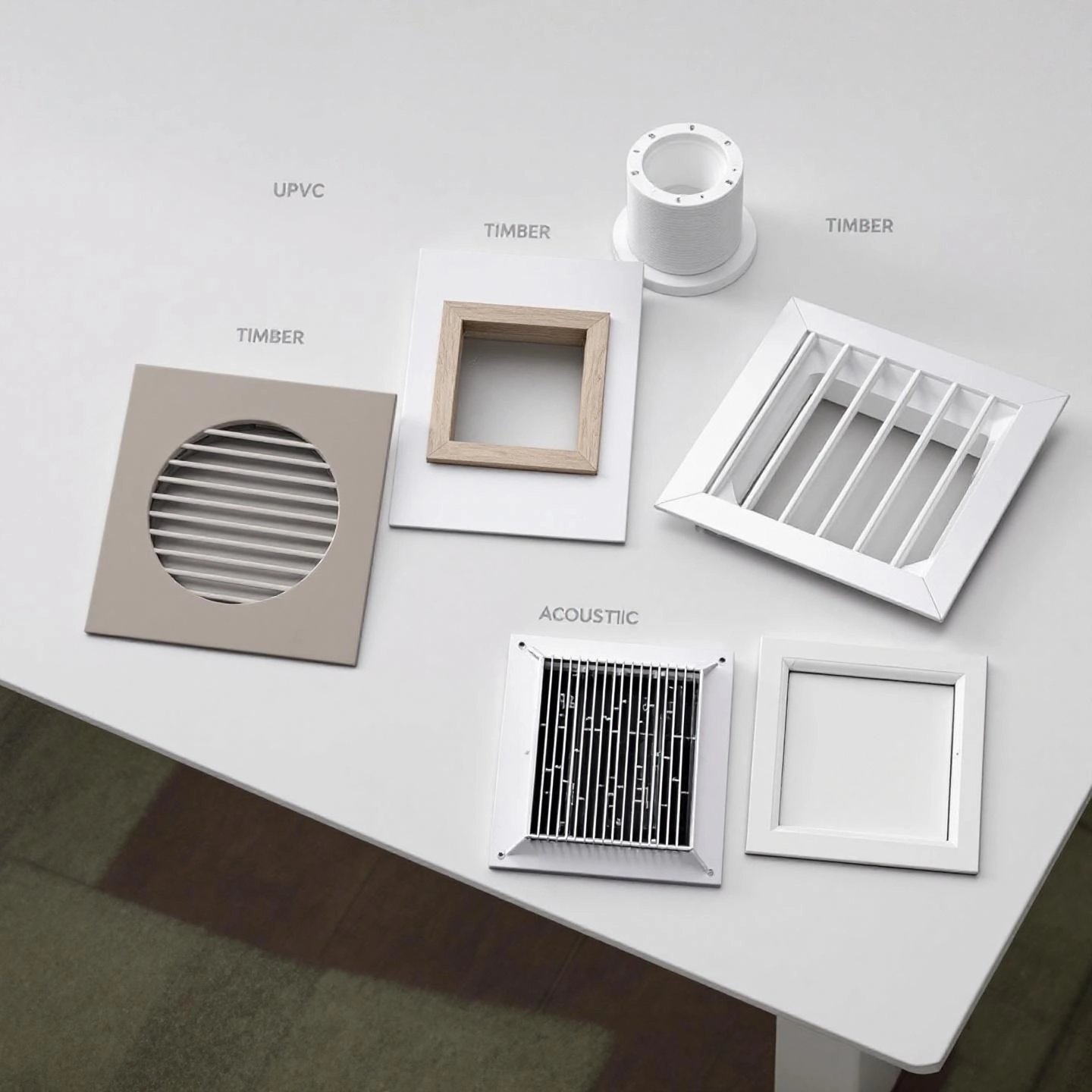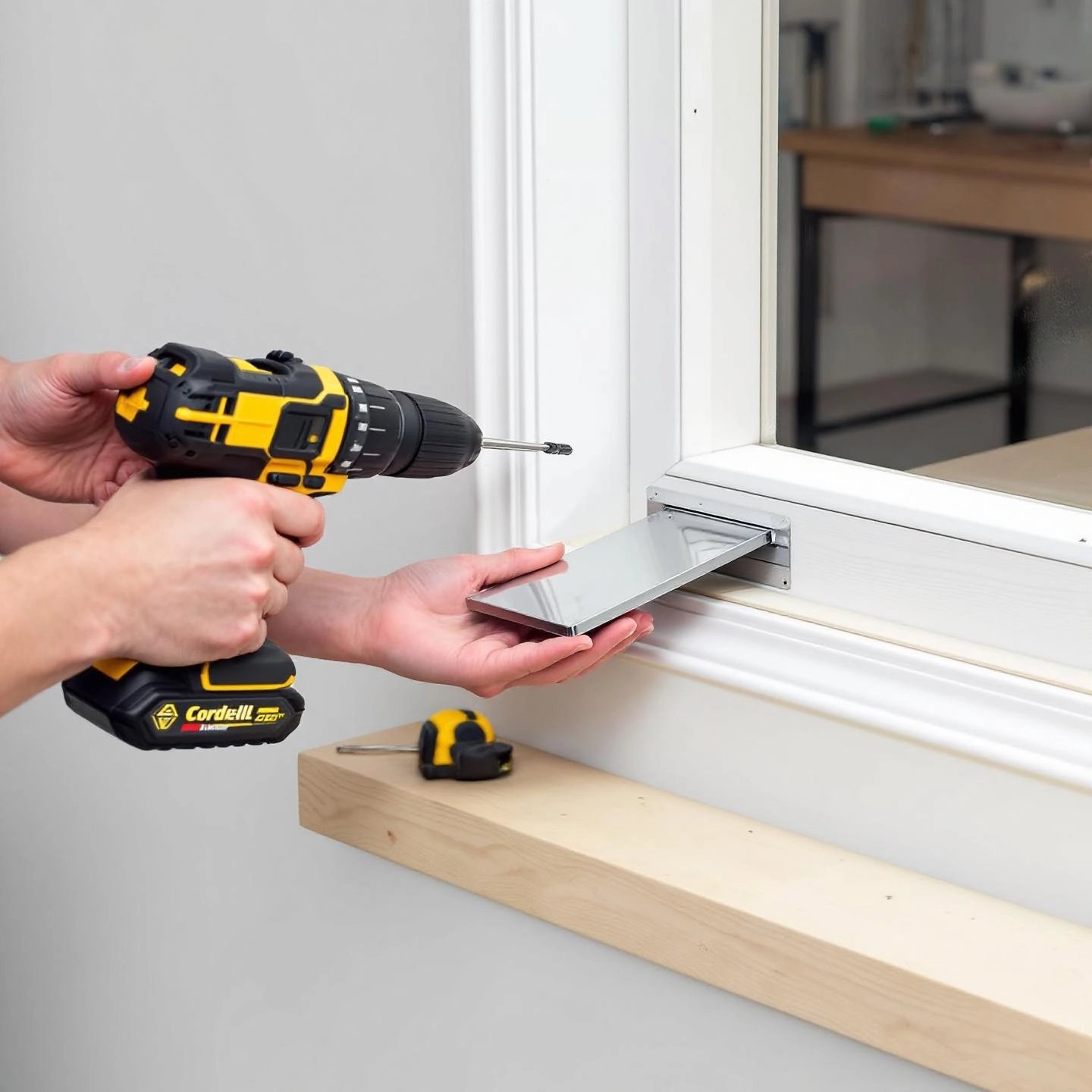
Have you ever noticed your home feeling stuffy, or maybe you’ve spotted condensation on your windows during colder months? These are subtle signs that your indoor air quality might not be as healthy as it could be. In fact, the air inside our homes can often contain higher levels of pollutants than the air outside, especially in modern, well-insulated buildings. According to the U.S. Environmental Protection Agency, inadequate ventilation is a leading cause of poor indoor air quality, which can lead to discomfort and even health issues like headaches, fatigue, and aggravated respiratory conditions(EPA).
As energy efficiency standards have improved, homes have become increasingly airtight. While this helps keep heat in and energy bills down, it also means less natural air exchange. Without a steady flow of fresh air, everyday activities—like cooking, cleaning, or even just breathing—can cause moisture and indoor pollutants to build up. Over time, this can contribute to mold growth, condensation, and a general decline in the comfort and healthiness of your living space.
So, how can you enjoy a cozy, energy-efficient home without sacrificing air quality? Enter the trickle vent. This simple device, often built into the frame of a window or door, allows a small but continuous flow of fresh air into your home—even when your windows are closed. Unlike throwing open a window (and letting in cold drafts or compromising security), a window trickle vent quietly works in the background to keep air moving, helping to regulate humidity and reduce the risk of condensation and mold.
In this comprehensive guide, you’ll discover:
Whether you’re renovating, building new, or simply looking to improve your home’s comfort, understanding trickle vents is a key step toward a healthier indoor environment. Let’s dive in and explore everything you need to know about this essential feature for modern living.

Ever wondered, what is a trickle vent and why is it showing up in so many new homes and window designs? If you’ve noticed a slim, discreet slot at the top of your window frame, you’ve likely encountered this clever feature. But what exactly does it do, and how does it work?
Picture a slow-drip irrigation system for your garden—delivering just enough water to keep plants healthy without flooding them. In much the same way, a trickle vent window provides a gentle, controlled stream of fresh air into your home, even when the window is shut. This helps maintain a healthy indoor environment without sacrificing warmth or security.
A typical trickle vent consists of three key components:
Rather than requiring you to open a window (and risk chilly drafts or reduced security), a trickle vent quietly delivers a steady, minimal flow of outdoor air into your living space. This process is called background ventilation—it’s always on, working in the background to keep air circulating and prevent the build-up of moisture or pollutants.
Most trickle vents are built into the top of the window or door frame, where rising moist air tends to collect. When you slide or tilt the vent open, it creates a subtle pathway for fresh air to enter and stale air to escape. And because the opening is small and shielded, you don’t have to worry about rain getting in or big temperature swings.
As homes become more airtight for energy efficiency, natural air leaks that once provided ventilation are sealed away. Without a feature like a trickle vent, indoor air can quickly become stale, leading to condensation, mold, and a decline in air quality (Duffells). Trickle vents offer a controllable, passive solution that’s easy to use and doesn’t compromise the comfort or security of your home.
So, next time you spot that slim slot above your window, you’ll know it’s more than just a design detail—it’s a small but mighty tool for a healthier, more comfortable living space. In the next section, we’ll explore just how much of a difference these vents can make when it comes to condensation and indoor air quality.
Ever wake up to foggy windows or notice a musty smell in your home? These are classic signs of excess indoor moisture and poor air circulation—issues that can quickly lead to discomfort, damage, and even health concerns. Many homeowners wonder: do trickle vents stop condensation? The answer is a resounding yes, when used correctly. Let’s explore how these small but powerful devices make a big difference in your living environment, especially in modern homes with features like trickle vents for uPVC windows.
Condensation forms when warm, moist air inside your home hits a cold surface—like a windowpane. The moisture in the air turns into water droplets, which can drip down and collect on sills and frames. Over time, this creates the perfect conditions for mold growth, rotting window frames, and even damage to walls and furnishings. If you’ve ever struggled with black spots on your bathroom ceiling or peeling paint near windows, trapped moisture is likely to blame.
Trickle vents provide a simple, effective solution by allowing a continuous, controlled flow of fresh air—even when your windows are closed. Think of them as a gentle “breath” for your home: they quietly let moist, stale air escape while bringing in drier, fresher air from outside. This constant background ventilation keeps humidity in check and stops condensation before it can start.
Modern uPVC windows are known for their airtight seal and energy-saving properties—but this tightness can actually make condensation worse if moisture has nowhere to go. Adding trickle vents to uPVC windows offers the best of both worlds: you keep the warmth in, but let excess humidity out. Homeowners often notice that rooms with trickle vents feel less stuffy, and window condensation becomes a rare occurrence rather than a daily nuisance.
To sum it up, trickle vents are a straightforward solution to some of the most common indoor air quality and moisture problems. Their advantages include:
Curious about the legal requirements for ventilation in your home or wondering if trickle vents are mandatory? In the next section, we’ll break down the building regulations and help you understand when and why these features are required.
When planning a window upgrade or building a new home, you might find yourself asking, are trickle vents required? Or maybe you’re wondering, do new windows have to have trickle vents? The answer is increasingly yes—especially if you live in the UK or similar regions with strict building codes. Let’s break down why these requirements exist and how they affect your next home improvement project.
Imagine sealing your home so tightly that not a breath of fresh air can sneak in. While this sounds great for energy savings, it can spell trouble for indoor air quality. Modern building regulations recognize this, and that’s why they set minimum standards for background ventilation—ensuring homes stay healthy, comfortable, and free from problems like condensation and mold.
In the UK, these requirements are outlined in Approved Document F of the Building Regulations. The goal? To maintain adequate indoor air quality by providing a steady stream of fresh air, even when windows and doors are shut tight.
Let’s make it simple. Here’s what the latest rules require for most homes:
The regulations don’t just specify where vents go—they also set minimum numbers for each home:
For open-plan areas, you’ll need at least three vents of the standard size. If a bathroom lacks an external wall, its ventilation requirement is added to the nearest adjoining room.
Skipping trickle vents isn’t just a paperwork issue—it can lead to failed building inspections and the need for costly retrofits. Local authorities and installation companies are required to check compliance, and indemnity policies won’t cover non-compliance (FENSA).
Understanding these regulations ensures your project runs smoothly—and your home stays comfortable and compliant. Next, we’ll look at the different types of trickle vents available and how to choose the right one for your needs.

When choosing background ventilation for your home, there’s no one-size-fits-all trickle vent. The variety of trickle vent types on the market means you can match your window style, performance needs, and budget with the perfect solution. But what’s the difference between a standard uPVC vent and an aluminum trickle vent? And how do acoustic or concealed options compare? Let’s break it down so you can make an informed choice for your space.
Imagine you’re shopping for a new phone—some models focus on durability, others on sound quality, and some simply blend in. Trickle vents are similar: each type has a specialty, whether it’s blending seamlessly into a heritage timber frame, blocking outside noise, or offering maximum weather resistance for modern aluminum windows. Here’s a closer look at the most common designs:
| Type | Key Features | Best Use Cases | Material Options | Material Advantages |
|---|---|---|---|---|
| Standard uPVC | Lightweight, affordable, easy to install, color-matched to frames | Modern uPVC windows, cost-conscious upgrades | uPVC | Resistant to weather, low maintenance, wide color range |
| Aluminum | Sleek, robust, corrosion-resistant, can be anodized or powder-coated | Contemporary homes, commercial buildings, eco-friendly designs | Aluminum | Exceptional durability, modern aesthetics, high strength-to-weight ratio |
| Timber | Natural look, blends with wooden frames, often custom-made | Heritage homes, conservation areas, period properties | Wood | Authentic appearance, can be refinished, matches traditional joinery |
| Composite | Hybrid of plastic and metal, versatile, enhanced durability | Mixed-material frames, demanding environments | Plastic + Metal | Balanced performance, lightweight, adaptable to many styles |
| Acoustic | Special baffles, sound-dampening, maintains airflow | Homes near busy roads, urban apartments, noise-sensitive spaces | uPVC, Aluminum | Reduces external noise, preserves comfort |
| Concealed/Over-Frame | Hidden design, installed over or within frame, minimal visual impact | Retrofits, design-led projects, where aesthetics are key | uPVC, Aluminum, Composite | Discreet, customizable, preserves window appearance |
For homeowners and architects aiming for a blend of style, longevity, and performance, aluminum trickle vents are an outstanding choice. Unlike plastic, aluminum resists warping, UV damage, and corrosion—making it especially suitable for exposed locations or commercial use. Its sleek, modern finish can be tailored with powder coatings or anodized colors, ensuring your vent matches or complements any window design.
Another key advantage? Aluminum’s strength allows for slimmer, more discreet vent profiles—so you get effective ventilation without bulky hardware interrupting your view. If you’re looking for a solution that’s built to last and visually appealing, this material is hard to beat.
If performance, reliability, and peace of mind are top priorities, consider premium aluminum trickle vents from trusted manufacturers like Shengxin Aluminum. Shengxin’s vents are designed for easy installation in both new builds and retrofits, fit seamlessly into uPVC, aluminum, or timber window frames, and are available in various colors and sizes. Their robust construction ensures years of corrosion-resistant, maintenance-free service—ideal for anyone seeking a high-quality, certified solution for modern ventilation needs.
What’s more, Shengxin’s vents are engineered with user-friendly features like manual sliders for adjustable airflow and a quiet operational profile, all while maintaining a minimal visual impact. With ISO 9001:2015 and RoHS certifications, you can trust you’re investing in a product that meets rigorous safety and environmental standards.
Ultimately, the ideal vent balances airflow, durability, appearance, and compliance with building regulations. As you weigh your options, consider the unique needs of your home—and remember, premium solutions like Shengxin Aluminum’s vents deliver both performance and peace of mind for the long term.
Next, we’ll explore alternatives to trickle vents and how they stack up, so you can make the best ventilation choice for your home’s comfort and efficiency.
When it comes to keeping your home fresh and comfortable, you might wonder: is there a good alternative to trickle vents? Or maybe you’re still asking, do trickle vents work as well as other options? Let’s break down the main alternatives and see how they compare—so you can make the best decision for your space and lifestyle.
| Solution | Pros | Cons | Best Suited For |
|---|---|---|---|
| Trickle Vents |
|
|
General home use, background ventilation |
| MVHR Systems |
|
|
Modern, airtight homes; allergy-sensitive households; energy-conscious owners |
| Extractor Fans |
|
|
Specific rooms with high humidity (kitchen, bath) |
| Opening Windows |
|
|
Quick air-out, mild weather, when home is occupied |
So, do trickle vents work for most homes? Absolutely—they’re a simple, cost-effective way to provide the background ventilation required by modern building regulations, especially in replacement windows or airtight renovations. While MVHR systems offer superior control, filtration, and efficiency, they come at a much higher price and require more complex installation. Extractor fans are great for targeted moisture control but don’t address whole-house air quality. And while opening windows is easy, it’s not always practical or energy efficient.
Ultimately, the best solution depends on your home’s design, your budget, and your comfort needs. For many homeowners, trickle vents strike the ideal balance—providing reliable, low-maintenance ventilation without the need for costly upgrades or major changes. In the next section, we’ll walk you through how to install trickle vents yourself, so you can enjoy fresher air with minimal fuss.

Ready to breathe easier at home? Installing a trickle vent might sound intimidating, but with a bit of planning and the right tools, it’s a straightforward DIY project—even if you’re not a seasoned handyman. Whether you’re retrofitting older uPVC windows or adding ventilation to new frames, this guide will walk you through every step of trickle vent installation for a healthier, more comfortable living space.
Before starting, always check the manufacturer’s instructions for your specific vent model. Proper preparation ensures a smooth process and lasting results.
Most modern trickle vents feature a simple slider or flip-down cover. To open, gently slide or pull the cover to allow airflow. To close, reverse the motion. For models with adjustable airflow, you can fine-tune the opening to your comfort. Regularly clean the vent covers to prevent dust build-up and ensure smooth operation.
By following these steps, you’ll enjoy the benefits of improved ventilation, reduced condensation, and a healthier home—all with a project you can complete in an afternoon. Next, we’ll address common concerns about drafts and noise, so you can make the most of your new trickle vents with confidence.
Ever wondered if leaving your trickle vents open will make your room chilly or let in unwanted noise? These are two of the most common concerns homeowners have when considering background ventilation. Let’s clear up the confusion so you can enjoy fresher air—without sacrificing comfort or peace and quiet.
Imagine it’s a brisk morning and you’re worried about losing heat through that slim vent above your window. The good news: properly installed trickle vents are designed to provide a gentle, controlled flow of air—not a draft. You shouldn’t feel a noticeable chill or breeze when you walk past a vent. If you do feel a draft, it’s often a sign of an issue such as:
According to ventilation experts, you should not feel a draught through trickle vents if they are sized and installed correctly. Their main job is to maintain air quality, not to cool your home. If you’re experiencing noticeable cold air, it’s worth checking the installation or consulting a professional.
Another worry is that trickle vents will let in outdoor noise—traffic, neighbors, or just the hum of the street. In most cases, the amount of sound that enters through a standard vent is quite low. For homes in quieter neighborhoods, you’ll likely notice little to no difference. However, if you live near a busy road or in a particularly noisy area, some sound may make its way inside.
For those who are especially sensitive to noise, acoustic trickle vents are a smart upgrade. These vents are engineered with internal baffles and sound-absorbing materials to reduce the amount of noise that passes through, all while maintaining airflow. Acoustic models are particularly effective for bedrooms, nurseries, or homes in bustling urban areas, helping you enjoy both fresh air and a quieter environment.
Have you ever heard a whistling or humming noise coming from your vent? This isn’t normal for a well-installed, quality product. Whistling often means:
Regular maintenance, such as cleaning dust from the vent covers and checking for loose fittings, helps keep everything running quietly and efficiently.
In summary, trickle vents—when chosen and installed correctly—offer the benefits of continuous, healthy ventilation without making your room cold or noisy. If you’re still unsure, consulting with a ventilation specialist can help you select the best solution for your home’s unique needs. Next, let’s break down the costs involved and see how investing in quality trickle vents can pay off in comfort and long-term value.

When planning to upgrade your home’s ventilation, you’ll naturally ask: What does a trickle vent cost? And is it worth spending a bit more on the best trickle vent for lasting comfort and peace of mind? Let’s break down the numbers, explore where your money goes, and show you how smart choices today can save you hassle—and even money—tomorrow.
Sounds complex? Imagine you’re comparing the cost of a cup of coffee versus a daily health supplement: both are small expenses, but one pays off in long-term well-being. Trickle vents work much the same way. Here’s what you can expect to pay:
| Expense Type | Typical Cost Range (per vent/window) | What’s Included? |
|---|---|---|
| Trickle Vent Product | £15 – £40 | Vent hardware (internal/external covers, fixings), basic instructions |
| Professional Installation | £50 (average) | Labor, compliance check, precise fitting, cleanup |
| DIY Installation | £0 (if self-installed) | Time, tools, and care—no labor fee, but you take on the risk |
For most homeowners, fitting trickle vents in every window typically means multiplying the product and installation cost by the number of windows. For example, installing vents in five windows could total between £75 and £200 for product alone, plus up to £250 for professional installation.
It’s tempting to choose the cheapest option, but here’s where the real value comes in. The best trickle vent isn’t just about price—it’s about durability, performance, and hassle-free operation for years to come. High-quality, certified vents:
Low-cost, uncertified vents may save you money up front, but can lead to issues like poor fit, whistling, or even the need for premature replacement—costing you more in the long run.
Imagine buying a vital car part—you wouldn’t trust just any brand. The same logic applies to ventilation. Sourcing directly from reputable manufacturers like Shengxin Aluminum means you’re investing in a product designed for reliability, easy installation, and lasting performance. Shengxin’s window trickle vents are suitable for uPVC, aluminum, and timber windows, feature a manual slider for simple airflow control, and are built to withstand weather and daily use—all while maintaining a discreet look and certified safety.
When you add up the cost of comfort, energy savings, and peace of mind, choosing a high-quality, certified trickle vent is a small investment that pays off every day. And if you’re still weighing your options, remember: the right vent will keep your home healthy, comfortable, and compliant for years to come.
In the final chapter, we’ll recap the key takeaways and help you confidently choose the best window ventilation solution for your home’s unique needs.
Imagine walking into your home and always breathing crisp, fresh air—no stuffiness, no foggy windows, no lingering odors. That’s the everyday comfort a well-chosen trickle vent can deliver. But what makes these small devices such a big deal for modern homeowners?
Let’s quickly recap the trickle vent benefits you’ve discovered throughout this guide:
So, what’s the best window ventilation solution for your needs? It comes down to a few key factors:
For homeowners seeking a reliable, easy-to-install, and high-performing option, Shengxin Aluminum’s window trickle vents stand out. Their slim design, robust construction, and certifications ensure you get all the benefits—without the hassle or worry.
If you’ve noticed condensation, stuffy air, or just want to future-proof your home, now’s the time to assess your ventilation. Review your window types, check for existing vents, and consider upgrading to a solution that delivers fresh air and peace of mind every day.
Remember, the small step of installing the right trickle vent is a giant leap toward a healthier, more comfortable home. For the best in performance and reliability, explore premium options like Shengxin Aluminum—so you can breathe easy, every season of the year.
Yes, trickle vents provide continuous background ventilation, helping control humidity and improve indoor air quality in airtight, energy-efficient homes. They reduce condensation and mold risk without causing drafts, making them a smart addition for most properties.
A trickle vent is a small opening built into a window frame that allows a steady flow of fresh air, even when the window is closed. Unlike opening a window, it maintains comfort and security by providing gentle, passive ventilation without noticeable drafts or heat loss.
Properly installed trickle vents deliver controlled airflow that doesn't create drafts or significant noise. Acoustic vent options are available for noise-sensitive spaces, and any whistling typically indicates poor installation or low-quality products.
Yes, trickle vents can be retrofitted to many existing windows, provided the frame has enough space. Installation involves carefully drilling the frame and fitting the vent components, or you can hire a professional for best results.
Aluminum trickle vents, like those from Shengxin Aluminum, offer superior durability, corrosion resistance, and a sleek, modern look. They’re ideal for long-lasting performance and can be color-matched to your window frames for a discreet finish.
 บริการออนไลน์
บริการออนไลน์ 0086 136 3563 2360
0086 136 3563 2360 sales@sxalu.com
sales@sxalu.com +86 136 3563 2360
+86 136 3563 2360